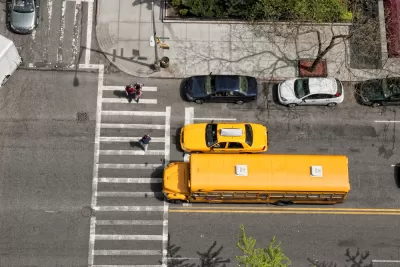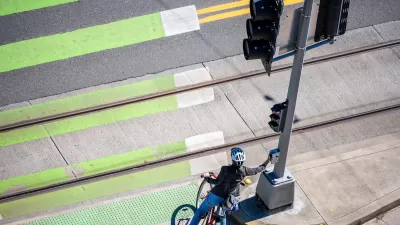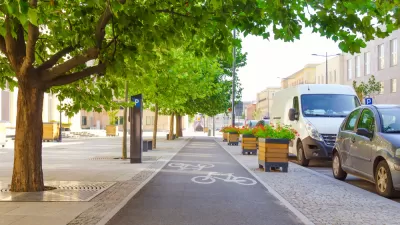Improving road safety starts with considering the safety of people outside cars early and often.

Writing for the Seattle Times, Anna Zivarts outlines some suggestions from the Mobility Safety Advisory Group for making roads safer, particularly for people not behind the wheel.
The group argues that making roads safer begins with thinking about the safety of all users, not just those in cars. “First, the surest way to ensure people aren’t killed by vehicles is to reduce speed,” Zivarts writes. This may sound inconvenient for people who want streets to move vehicles as quickly as possible, but is a guaranteed way to reduce traffic deaths. “We need to challenge the unspoken consensus that our infrastructure must guarantee vehicle traffic flow at specific speeds and come up with improved metrics that value access and safety.”
Second, reducing traffic violence means making other modes more convenient and safe to use, taking cars off the road and providing more mobility options. When people have access to good public transit and safe infrastructure for biking and walking, they often choose to leave the car at home. For transit-dependent workers who don’t own cars, improving transit and ‘Complete Streets’ infrastructure can provide crucial links to jobs and opportunities.
The third key piece, according to the MSAG, is changing patterns of land use and improving housing affordability. “Most critically, we need to tackle land use and housing affordability. It’s much easier to reduce car speeds, reduce vehicle miles traveled, and increase the percentage of trips made by walking, rolling, riding and transit if we stop building communities centered on automobility.”
FULL STORY: To increase pedestrian safety, prioritize the people not in cars

Planetizen Federal Action Tracker
A weekly monitor of how Trump’s orders and actions are impacting planners and planning in America.

Maui's Vacation Rental Debate Turns Ugly
Verbal attacks, misinformation campaigns and fistfights plague a high-stakes debate to convert thousands of vacation rentals into long-term housing.

San Francisco Suspends Traffic Calming Amidst Record Deaths
Citing “a challenging fiscal landscape,” the city will cease the program on the heels of 42 traffic deaths, including 24 pedestrians.

Defunct Pittsburgh Power Plant to Become Residential Tower
A decommissioned steam heat plant will be redeveloped into almost 100 affordable housing units.

Trump Prompts Restructuring of Transportation Research Board in “Unprecedented Overreach”
The TRB has eliminated more than half of its committees including those focused on climate, equity, and cities.

Amtrak Rolls Out New Orleans to Alabama “Mardi Gras” Train
The new service will operate morning and evening departures between Mobile and New Orleans.
Urban Design for Planners 1: Software Tools
This six-course series explores essential urban design concepts using open source software and equips planners with the tools they need to participate fully in the urban design process.
Planning for Universal Design
Learn the tools for implementing Universal Design in planning regulations.
Heyer Gruel & Associates PA
JM Goldson LLC
Custer County Colorado
City of Camden Redevelopment Agency
City of Astoria
Transportation Research & Education Center (TREC) at Portland State University
Jefferson Parish Government
Camden Redevelopment Agency
City of Claremont





























